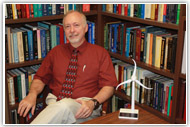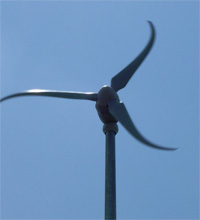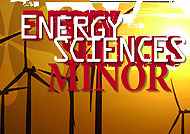 Kenneth G. Cassman, Director of the Nebraska Center for Energy Science Research, and Heuermann Professor of Agronomy announced the paper on “Improvements in Life Cycle Energy Efficiency and Greenhouse Gas Emissions of Corn Ethanol” was published on the website of the Journal of Industrial Ecology for public access. This journal is the “gold standard” for publication of research on life cyle analysis of industrial and agricultural systems.
Kenneth G. Cassman, Director of the Nebraska Center for Energy Science Research, and Heuermann Professor of Agronomy announced the paper on “Improvements in Life Cycle Energy Efficiency and Greenhouse Gas Emissions of Corn Ethanol” was published on the website of the Journal of Industrial Ecology for public access. This journal is the “gold standard” for publication of research on life cyle analysis of industrial and agricultural systems.
The results presented in this paper show that current corn-ethanol systems are much more energy efficient and have a much greater potential to reduce greenhouse gas emissions than previously published studies. The reason for this discrepancy is that, compared to the earlier studies, UNL’s research team utilized more recent data that better represent how the corn ethanol industry is currently performing. In particular, updated values were used for: (1) yields and inputs required for corn production, (2) energy requirements in the ethanol plant, and (3) a more accurate representation of how co-products are used in livestock diets.
The interdisciplinary team of researchers included agronomists, soil scientists, animal scientists and engineers, as well as feedback and input from industry. These researchers also presented data that shows there remains significant potential to further reduce greenhouse gas (GHG) emissions and improve energy efficiency. The UNL research team hopes the results from this research will contribute to efforts by the Environmental Protection Agency and state agencies with mandates to establish standards for estimating the GHG reduction potential of corn-ethanol systems. The paper presents the most up-to-date estimates of the direct-effect GHG emissions reduction and has the strongest underpinning science of all current estimates, especially because of the interdisciplinary approach used to perform the study.
Click here to read the paper on the web, or here to view the pdf
 NCESR director Ken Cassman said Hudgins provides leadership and expertise in solar, wind and geothermal energy; energy storage and distributed power systems; architectural engineering; and energy conservation for commercial buildings and residences. Hudgins also leads UNL’s efforts to connect with industry and government agencies in these areas. MORE …
NCESR director Ken Cassman said Hudgins provides leadership and expertise in solar, wind and geothermal energy; energy storage and distributed power systems; architectural engineering; and energy conservation for commercial buildings and residences. Hudgins also leads UNL’s efforts to connect with industry and government agencies in these areas. MORE …


